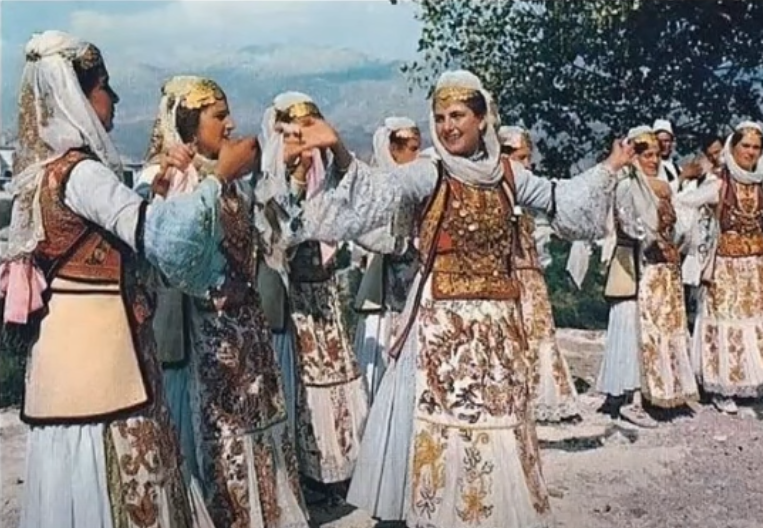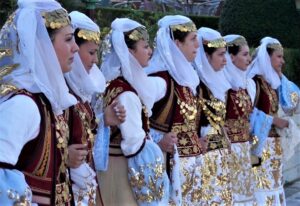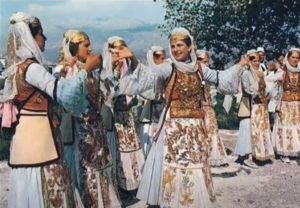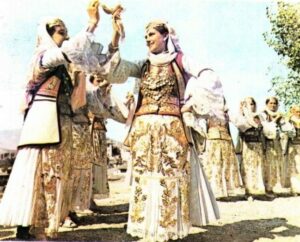Dropulli Folk Dances are most commonly accompanied by homophonic songs (with lyrics). Dropulli folk dance is the best form of connecting people physically and spiritually, which is why feasts are the best events in people’s lives to practice and share traditions and joys of daily life.
The two-step folk dance is an emotional type performed in a circle, which takes us back to the 5th century BC., when according to Homer’s Iliad, Corypheus of the dance, with 50 other people, danced in honor of Dionysus (God of abundance and wealth) waiving around his imaginary image, praying for prosperity and productivity.
Even today, this dance is performed in a circle, holding each other’s hands. Dance brings the participants closer boosting a feeling of togetherness and is the best form to show off physical and spiritual beauty. The leader of the lineup reflects the order of age, while religious celebrations respect the clerical hierarchy. Nowadays, this tradition is hardly practiced.
This style is called a two-step dance because since ancient times it was danced in two moves, the first move: the left foot makes one step forward; and the second move: the right foot accompanies the left one. Then, the right foot steps back and the left one accompanies it. Usually, men perform the second move or jump with the accompanying foot around 20 cm above the ground. The dance is performed in 2/4 rhythmic measure with two moves, one-fourth note, and two eighth notes. This measure in ancient times was the finger (rhythm) of Greek poetry and was accompanied by songs, while today it is also accompanied by saze (orchestra). Dropulli’s folk dance is organically connected to the melody (music) and depends on its dynamics, which makes it a form of folk art. The two-step dance comes in varied melody representations both in terms of rhythm and structure (tonal-modal); not to mention the actual morphological examination of the dance, because it is difficult to succinctly characterize reverberations of folk dances. This is because there are dances with two, three, four, and even more various melodic parts quite often repeated and at times featuring the same rhythmic scene or the same agogic accent with slow, medium, or fast moves, such as the one called kaçakshe dance.
Actually, folk dance is a special language of plastic movements of the body and limbs expressing through this language people’s dramatic, epic, funny, humorous feelings and thoughts. The distinctive features of these dances highlight their origin in the ancient Greek Pyrrhic dances.
After the 1850s, when the clarinet (saze-s) came out, several types of dances have been accompanied only by saze-s, doing away with the text, thus lending the saze-s complete leeway of impromptu performance. Upon the emergence of saze music, the two-step dance was converted into four moves, gradually coming up with what today is a folk-dance pattern. As a typical dance, it is preferred by many women at weddings, and especially the bride, who gets into dancing quite moderately, her body upright and proud, without exaggerated moves, as she has taken center stage and her purpose is to show off her adornments as well as her physical and spiritual beauty. This type of folk dance is common practice throughout the Balkans.
The two-step dance of Dropulli brides is a fresh arrangement. It emerged after the 1960s upon the folklore festivals on stage, as ceremonies engaging many brides performing altogether, were non-existent before. It is precisely this new arrangement from which this dance derived its name.




